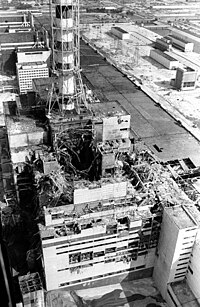
Photo from wikipedia
Laser stitch welding is one of the most reliable and efficient permanent metal joining processes in the automotive industry, particularly in the manufacturing of a car body-in-white (BIW). It is… Click to show full abstract
Laser stitch welding is one of the most reliable and efficient permanent metal joining processes in the automotive industry, particularly in the manufacturing of a car body-in-white (BIW). It is widely known that this welding process induces the generation of residual stresses that can influence the dynamic behaviours of welded structures. In order to accurately predict the dynamic behaviours of these welded structures, it is important to experimentally understand the influence of residual stress. Therefore, this study addresses the finite element modelling method of thin steel welded structures with and without the influences of residual stress in order to identify its effect towards dynamic behaviours. The finite element models of thin steel welded structures are developed by employing the area contact model (ACM2) format element connector. The accuracy of the finite element models is then compared in terms of natural frequencies and mode shapes with the experimental counterparts. The dynamic behaviours of the measured structure are obtained using an impact hammer with free-free boundary conditions. The results demonstrate the importance of considering the influence of laser stitch welding residual stress in predicting the dynamic behaviours of thin steel welded structure.
Journal Title: Journal of Mechanical Engineering and Sciences
Year Published: 2019
Link to full text (if available)
Share on Social Media: Sign Up to like & get
recommendations!